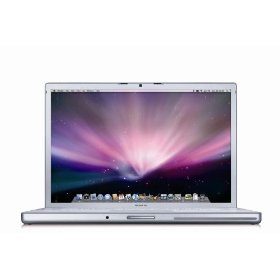Dell is fired.
 This is the bottom line: either Dell cannot implement WSXGA+ properly or the technology itself is flawed. My Dell Inspiron 6400 in the middle of 2008 had to be repaired because the display failed. About six months later, the display is failing again.
This is the bottom line: either Dell cannot implement WSXGA+ properly or the technology itself is flawed. My Dell Inspiron 6400 in the middle of 2008 had to be repaired because the display failed. About six months later, the display is failing again.
The problem resembles an old-school problem from the days of rabbit-ear television antennas. Since last week, every time I turn this computer on the display will appear scrambled. Simply lifting the lid affects the display. All of you eager nerds out there will shoot for the ‘perfect’ problem and just assume that “all I need to do is” open the framing-bezel for the LCD and just check the connections because, “They are probably loose.”
My person and three other people here in the cubicles have taken this Inspiron 6400 completely apart with the help of the Dell™ Inspiron™ 6400/E1505 Service Manual. (It was a great opportunity to air-can the dust out, by the way…) We found no “loose” connections. Never without, here are some findings:
-
According to Wikipedia.org, WSXGA+ is not a standard. WUXGA is the closest standard resolution that’s big enough for me—actually it’s a little too big at 1920×1080 (“appropriate for viewing North American HDTV content”).
-
It is an error to assume (like I still do) that, because an older series of technology lasts a certain period of time before failure, the newer technology will be superior.
-
It is just possible that one of the benefits of using a wide-screen notebook with metal casing, like the new (aluminum) MacBook Pro, is that the LCD panel will have more protection from flexing wear and tear.So I’m looking at the Lenovo W Series, namely the ThinkPad W500 15.4" widescreen with discrete graphics (4058CTO, $1,599.00):
-
Processor: Intel Core 2 Duo Processor P8400 (2.26GHz 1066MHz 3MBL2) 25W
-
Operating system: Genuine Windows Vista Business
-
Display type: 15.4" WUXGA TFT
-
System graphics: ATI Mobility FireGL V5700 with 512MB VRAM
-
Total memory: 4 GB PC3-8500 DDR3 SDRAM 1067MHz SODIMM Memory (2 DIMM)
-
Hard drive: 160 GB Hard Disk Drive, 7200rpm
-
Optical device: CD-RW/DVD-ROM Combo 24X/24X/24X/8X Max, Ultrabay Slim (Serial ATA)
-
Card Reader: 7 in 1 Media Card Reader
-
System expansion slots: Express Card Slot & PC Card Slot
-
Integrated WiFi wireless LAN adapters: ThinkPad 11b/g Wireless LAN Mini PCI Express Adapter III
-
Mobile Broadband: Integrated Mobile Broadband upgradable
-
Battery: 6 cell Li-Ion Battery
-
Power cord: Country Pack North America with Line cord & 90W AC adapter
-
Language pack: Language Pack US EnglishThe price tag is so close to $2000 because of my new demands for the WUXGA standard and 7200rpm for the hard drive—and, of course, 4 GB of RAM is twice at much in use by me now. Notice that I pulled back on the battery because I assume that Lithium-poison batteries will fail ‘prematurely’ (or explode) and should be regarded like ink jet cartridges in terms of a Dracula-like business model.
One issue that is aging rapidly in the “real world” is true digital audio support in portable computers. My previous SPDIF experiment suggests that this technology is not welcome by the barbarian sense of property as sung by the RIAA. Another possibility is that this support is not actually needed anymore. I’ll have to look into this…
So looking at the Lenovo is me essentially concluding that I am willing to experiment one more time with a plastic-case portable computer before resigning myself to pay about $1000 more dollars for conducting, crackling aluminum from Apple. This also says that Dell is fired. The day I found out that this company would rather use ugly-American sales people as a first-class, premiere sales option, I knew something was going wrong. Even Putin in Russia knows that Dell is Texas-Bush played out. My forlorn guess is that Lenovo is the new Dell (and HP has Compaq somewhere inside of it)—we’ll see what this China-based team can do…
